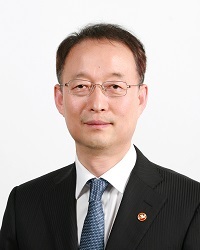Korea capitalizes on future industries for innovative growth
By Korea HeraldPublished : March 19, 2018 - 18:17
By Paik Un-gyu, minister of trade, industry and energy
Competition between countries to transform into innovation-powered economies is heating up, as they brace themselves for the “fourth industrial revolution,” a new era characterized by the integration of the real and digital worlds.
Against the backdrop of this intense global race for future growth, Korea has driven its own innovative growth initiative since the beginning of the year. Innovative growth means an increase in economic capacity gained by technology-driven innovation in industries and enterprises.
Competition between countries to transform into innovation-powered economies is heating up, as they brace themselves for the “fourth industrial revolution,” a new era characterized by the integration of the real and digital worlds.
Against the backdrop of this intense global race for future growth, Korea has driven its own innovative growth initiative since the beginning of the year. Innovative growth means an increase in economic capacity gained by technology-driven innovation in industries and enterprises.

The drive for innovative growth is one of the three pillars of the Moon administration’s people-centered economic growth policy, along with the jobs and income-led growth initiative and fair economy initiative.
Focus on five strategic areas
To ensure Korea’s continued growth in the fourth industrial revolution, the Ministry of Trade, Industry and Energy has put its policy priority on nurturing five future industries: electric and self-driving vehicles, the internet of things, biohealth, new energies and semiconductors and displays.
Since the electric and self-driving car industry is one of the key sectors that will determine the success of innovative growth, the government will encourage research and development activities, train experts and professionals and implement regulatory reforms in this sector.
Specifically, Korea is to boost the number of electric vehicles on streets to 350,000 units in the next five years from accumulated sales of 25,000 vehicles in 2017, aiming to urge market maturity.
For action plans of the policy goal, it will support the development of technologies that will double both the efficiency and charging speeds of existing electric vehicles.
Battery charging infrastructure will also see a steep improvement. By the end of this year, the number of rapid chargers will increase 60 percent to 4,000 units from 2,532 units last year. Moreover, residents in Korea will enjoy among the world’s best incentive schemes for electric vehicle purchases.
Test runs of Korean autonomous vehicles on public roads during the 2018 PyeongChang Olympics proved that the country is raising its technological presence in the self-driving world. To sharpen its technological edge, Korea has set a goal of improving its current level 2 of autonomous driving technology to level 3, which enables self-driving on highways by 2022.
This goal requires a regulatory sandbox, test beds, a fifth-generation telecommunications network and nine major homegrown self-driving car components, including light detection and ranging and artificial intelligence. Investments will be poured into developing business models in the service sector, which is critical to create an industry.
In the semiconductors industry, Korea’s largest export sector, the country will make all-out efforts to maintain its global competitive advantage. For this, it will raise the ratio of homegrown technology in semiconductor equipment from 20 percent in 2017 to 30 percent in 2022. The ratio of made-in-Korea technology in semiconductor materials will also be increased to 70 percent for the next five years from 50 percent in 2017.
Korea will spur the development of innovative technologies to produce cutting-edge semiconductors that perform 1,000 times better while using 1,000 times less electricity than current models.
To expand new markets for chip businesses, the government will encourage convergence between the semiconductors sector and other industries with strong demand for chips, like automobiles, home appliances and energies.
In pursuit of artificial intelligence technology-driven transformation in the energy sector, Korea will facilitate the spread of cutting-edge technologies like big data and Vehicle-to-Grid systems in the renewable energy and electric vehicle industries, and also promote investments in new “Internet of Energy” businesses. With the streamlining of institutional arrangements and the improvement of rules and regulations, these efforts will result in the creation of various new products and services in the energy sector.
Jobs, jobs, jobs
The ultimate goal of industry policies is to create more jobs. In this regard, Korea will increase the number of innovative and globally competitive middle-sized enterprises, each with annual sales of over 1 trillion won ($930 million), to 80 by 2022 from 34 in 2015.
To pump up both innovative growth and job creation, the ministry will steadfastly pursue various key international cooperation projects in a variety of sectors, ranging from shipbuilding to gas production to construction of the Northeast Asia Super Grid.
Diversification of trade markets aimed at decreasing dependence on China and the US, the nation’s top two trading partners, is another key strategy to create quality jobs for young people in the mid- and long-term.
Under the New Northern Policies, Korea will step up cooperation with Russia and other Eurasian countries, and in support of the New Southern Policies, it will expand its cooperation with other major economies, such as the Association of Southeast Asian Nations and India.
-
Articles by Korea Herald







![[KH Explains] How should Korea adjust its trade defenses against Chinese EVs?](http://res.heraldm.com/phpwas/restmb_idxmake.php?idx=644&simg=/content/image/2024/04/15/20240415050562_0.jpg&u=20240415144419)











![[Today’s K-pop] Stray Kids to return soon: report](http://res.heraldm.com/phpwas/restmb_idxmake.php?idx=642&simg=/content/image/2024/04/16/20240416050713_0.jpg&u=)